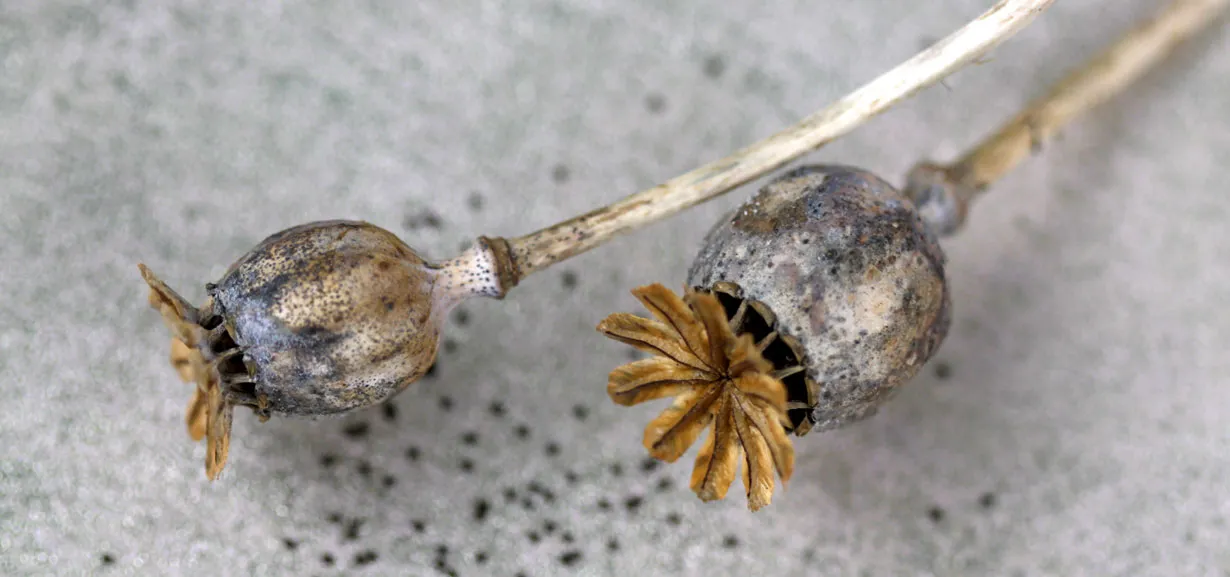Poppy pods, with their unique shapes and natural beauty, offer a versatile element for home décor. These dried seed heads can be used in numerous creative ways to enhance your living space with rustic charm. Here are nine inspiring ideas to incorporate poppy pods into your home décor.
1. Elegant Floral Arrangements Poppy pods add texture and depth to floral arrangements. Their neutral tones blend seamlessly with fresh or dried flowers, creating stunning centerpieces that elevate any room.
2. Rustic Wreaths Incorporate poppy pods into seasonal wreaths for a unique, earthy touch. Combine them with eucalyptus, pinecones, or dried lavender to craft a natural, long-lasting decoration for your door or wall.
3. Decorative Bowl Fillers Fill decorative bowls or glass vases with dried poppy pods online for a simple yet sophisticated centerpiece. Their organic form and muted colors complement any decor style.
4. Table Settings and Place Cards Use poppy pods as part of your table decor by placing them on napkins or attaching them to place cards. This subtle detail adds a natural, elegant touch to special gatherings.
5. DIY Botanical Art Press poppy pods onto canvas or frame them in shadow boxes to create botanical wall art. Their intricate details make for beautiful, nature-inspired artwork.
6. Unique Garland and Hanging Decor String poppy pods together with twine to craft a rustic garland. Hang them across mantels, doorways, or windows for an earthy, bohemian look.
7. Candle and Vase Embellishments Glue or tie poppy pods around candles or vases to enhance their visual appeal. This simple DIY project adds a decorative touch to any space.
8. Potpourri Enhancers Enhance homemade potpourri with poppy pods. Their textured appearance adds a unique visual element while blending well with dried flowers and fragrant spices.
9. Seasonal Holiday Decor Use poppy pods to create holiday ornaments, tree decorations, or Thanksgiving table accents. Their natural aesthetic fits beautifully into festive displays.
With their delicate yet structured form, poppy pods offer endless opportunities for home decor creativity. Whether used in floral arrangements, wall art, or seasonal decorations, they bring a touch of nature indoors, making your home feel warm and inviting.
20. How to Create Natural Dyes from Poppy Pods
Natural dyes have been used for centuries to color fabrics, yarns, and even paper. One unique and beautiful natural dye source is the poppy pod. These seed pods from the poppy flower can yield earthy hues, ranging from soft browns to muted purples. If you are interested in natural dyeing and want to explore the colors poppy pods can offer, this guide will walk you through the process.
Understanding Natural Dyes from Poppy Pods
Poppy pods for sale contain tannins and alkaloids that influence the final dye color. The shade you achieve depends on several factors, including the mordant used, water pH, and the length of time the fabric soaks in the dye bath. Experimenting with these variables can help you achieve a range of colors.
Materials Needed
Before you start, gather the necessary materials:
- Dried poppy pods (whole or crushed)
- A large stainless steel or enamel pot
- Water
- Mordants (such as alum, iron, or vinegar)
- Natural fiber fabric or yarn (cotton, silk, wool, or linen)
- Strainer or cheesecloth
- Gloves and stirring stick
Step 1: Preparing the Poppy Pods
- Crush or break apart dried poppy pods to release more dye compounds.
- Place them in a pot and cover with water (a 2:1 water-to-pods ratio is a good starting point).
- Let the mixture soak overnight for a stronger dye bath.
Step 2: Simmering the Dye Bath
- Heat the mixture slowly, bringing it to a gentle simmer (not a rolling boil) for about 1–2 hours.
- Stir occasionally to ensure the dye compounds are extracted evenly.
- Once the water turns a deep color, remove from heat and let it cool completely.
- Strain out the plant material using a cheesecloth or fine strainer, keeping only the liquid.
Step 3: Preparing the Fabric
- Wash the fabric or yarn thoroughly to remove any oils or residues.
- Mordanting helps the dye bind to the fibers better. Different mordants yield different shades:
- Alum: Enhances brightness and longevity
- Iron: Darkens colors and adds grayish tones
- Vinegar: Slightly alters pH for varied hues
- Soak the fabric in the chosen mordant solution for at least an hour before dyeing.
Step 4: Dyeing the Fabric
- Place the wet, mordanted fabric into the strained dye bath.
- Heat gently, keeping the temperature low to avoid damaging the fibers.
- Stir occasionally and allow the fabric to absorb the dye for 1–2 hours.
- For deeper hues, let the fabric soak overnight.
- Remove the fabric and rinse with cold water until the water runs clear.
- Hang to dry away from direct sunlight.
Step 5: Finishing and Caring for Dyed Fabrics
- Once dried, iron the fabric to set the dye.
- Hand wash separately with mild detergent to maintain color vibrancy.
- Store dyed items away from direct sunlight to prevent fading.
Tips for Experimenting with Poppy Pod Dyes
- Modify pH: Adding baking soda (alkaline) may shift the color to a different hue, while adding lemon juice (acidic) can create variations.
- Layering Colors: Dye the fabric multiple times or over-dye with other natural dyes like indigo or madder for complex shades.
- Test Swatches: Always test a small piece of fabric before dyeing an entire batch.
Conclusion
Creating natural dyes from poppy pods is an exciting and eco-friendly way to add unique colors to textiles. With simple materials and some patience, you can produce soft, earthy hues that are completely natural and sustainable. Whether you are a beginner or an experienced natural dyer, experimenting with poppy pods will add a new dimension to your craft. Try different mordants and techniques to discover the endless possibilities of this beautiful botanical dye.



